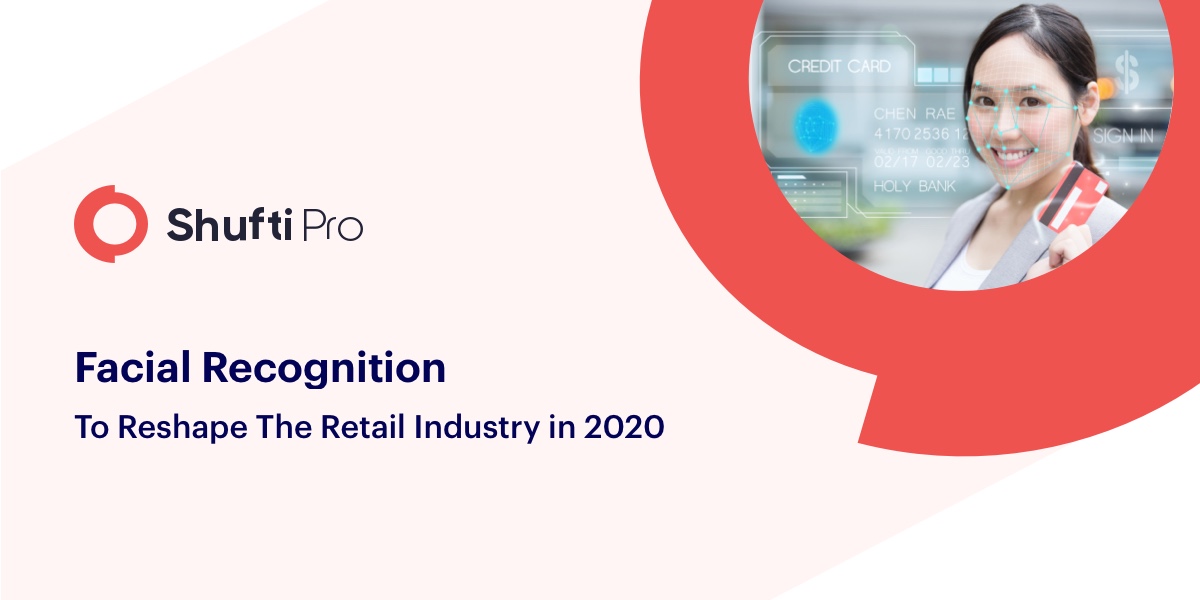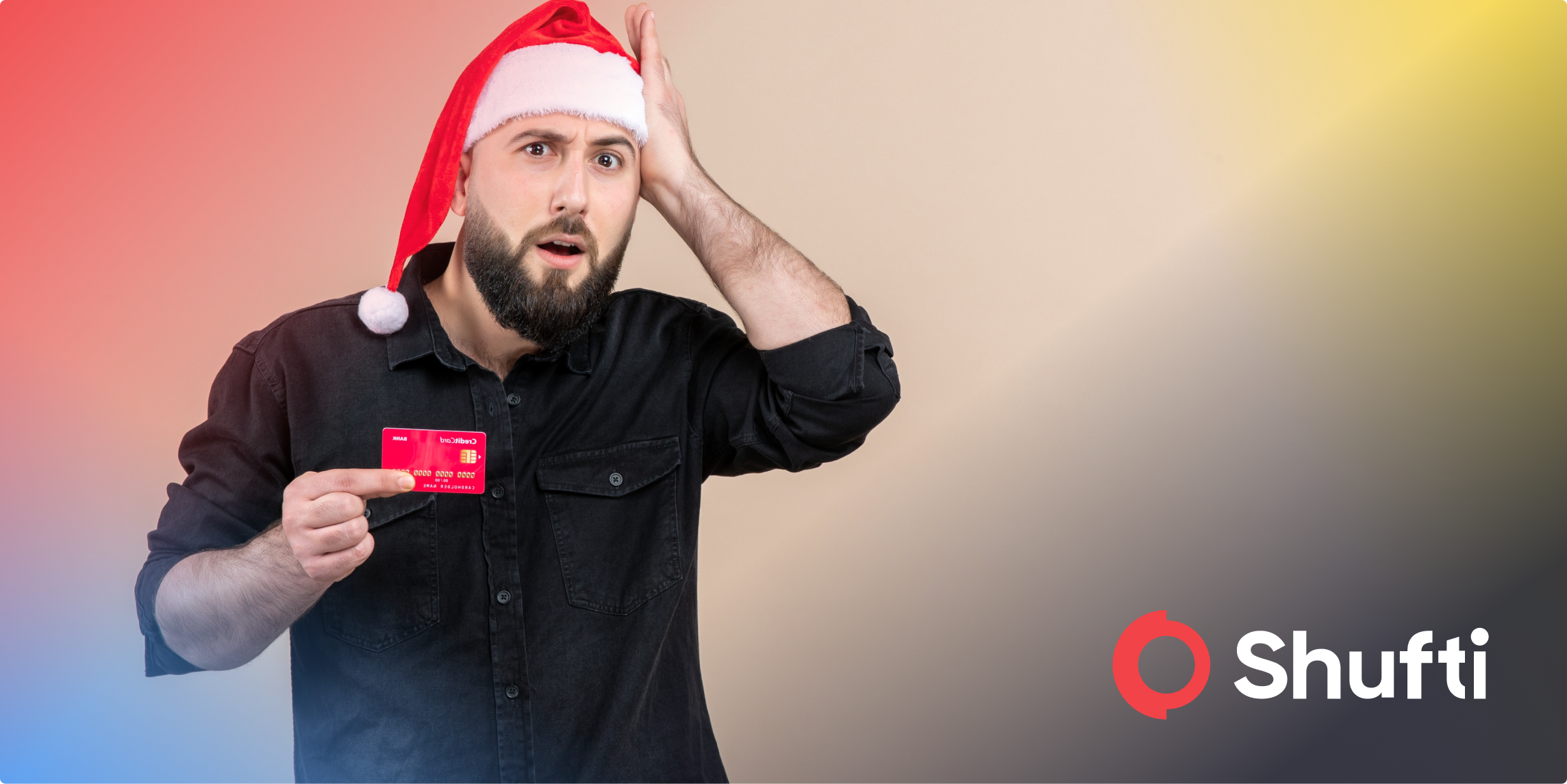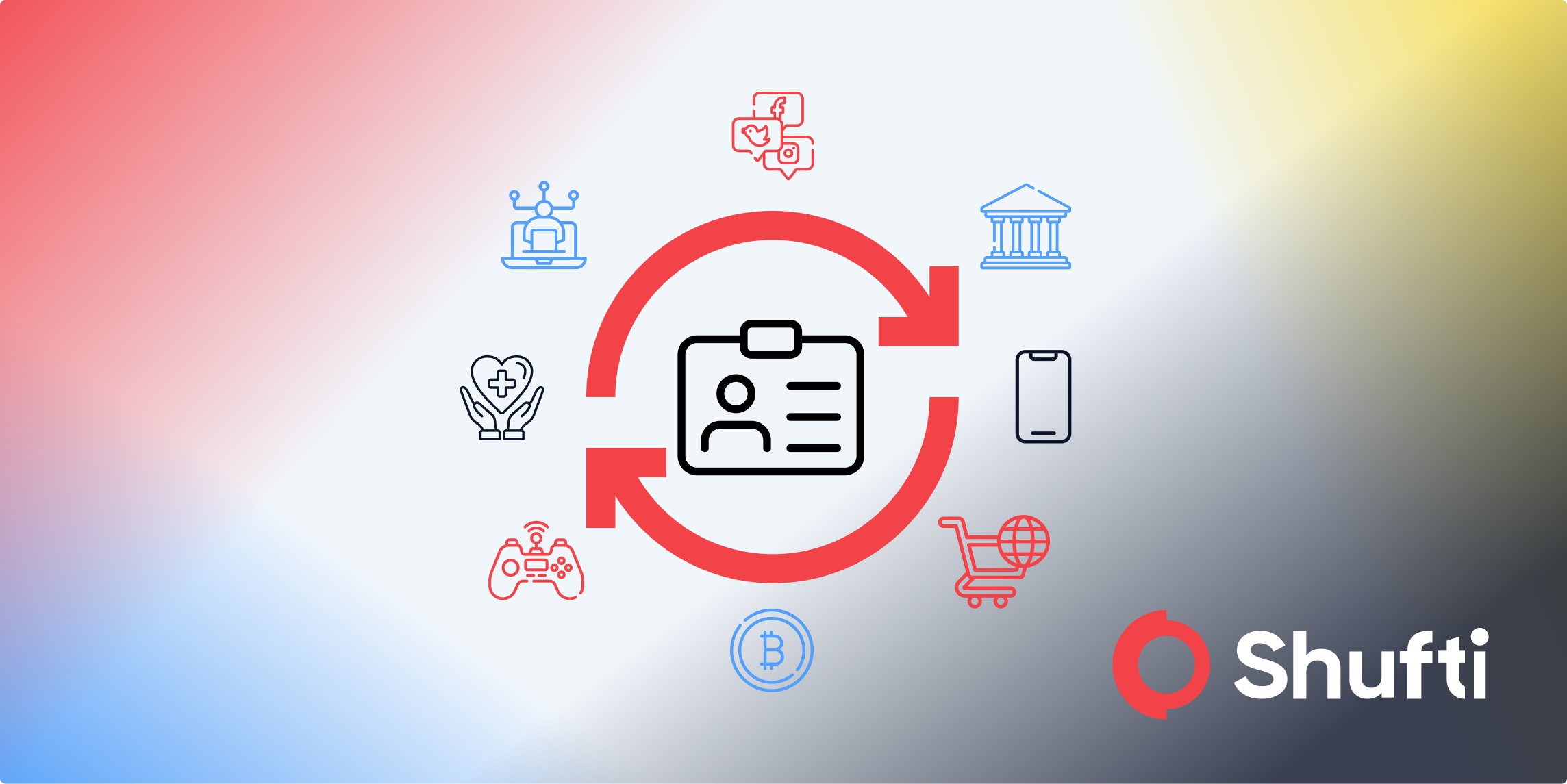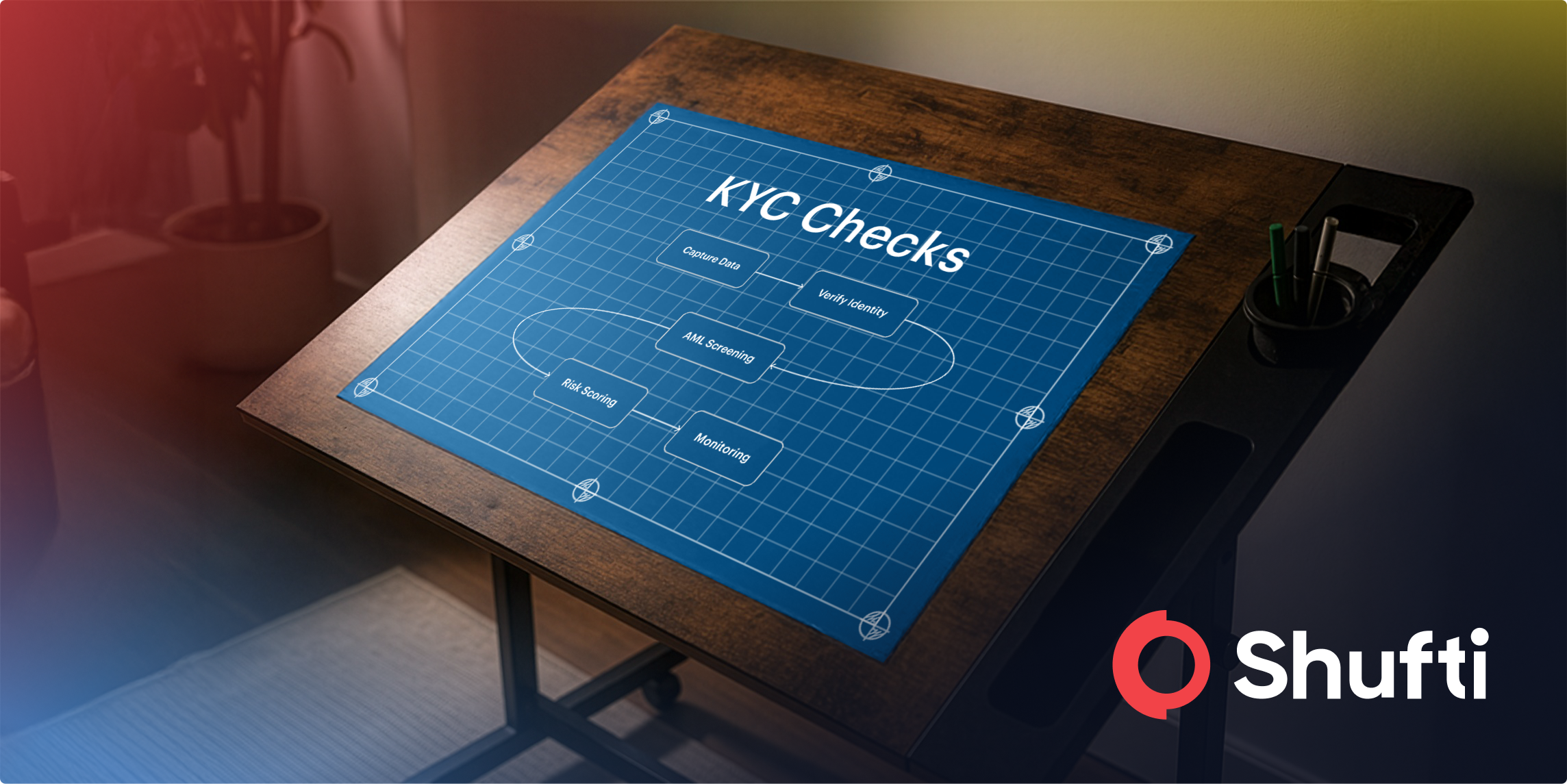Facial Recognition to Reshape the Retail Industry in 2020

The explosion of facial recognition technology in our smartphones – for instance in iPhone X – is gradually accelerating the adoption of this biometric technology. The technology is not only going to reshape the business operations but will change the way we live and shop. Counterpoint Research predicts that more than 1 billion smartphones will be incorporating facial recognition technology. It means 64% of smartphones in 2020 will have this technology as compared to 5% in 2017.
Developments in Facial Recognition Technology
Facial recognition technology has been around for some years now. However, the advancements in artificial intelligence and machine learning algorithms have introduced new revolutions in this technology. Recent developments in technology are not limited to unlocking your phone – though people are loving the idea of password-less authentication.
With exceptional speed and ease, this face-driven technology is enhancing the security making access to public places more convenient and personalized. Moreover, through facial recognition, the unique biometric token (face ID) empowers frictionless and personalized user experience – whether it’s an airport, hotel or a shopping mall. These evident user benefits are making this technology more acceptable in society.
Some Use cases of Face Recognition Technology
Facial Recognition Technology is currently serving a lot of industries – including financial institutes, education sector, e-commerce and retail, fintech, and corporate sectors – in multiple ways. From attendance to employee management, and cardless payment to fraud prevention, face verification is not only improving business operation but also security and customer experience.
Lifting Public Security Through Technology
Security has always been a major concern for businesses – online and physical both. In brick-and-mortar retailing stores whenever people gather, there is always a security threat triggering security concerns not only in our minds but also for owners as well. The major challenge that businesses face is to balance security and customer experience. To achieve both at the same time, retailers need an efficient solution.
Surveillance cameras with integrated facial recognition technology are the best solution to address security concerns in public shops. The retailers can ensure that only authorized entities can have access to their services and facilities. Moreover, the presence of any suspicious or threatening person can be reported immediately – taking immediate action.
Moreover, the inclusion of facial recognition technology in consumers’ product is encouraging more people to accept this technology for surveillance.
Prevent Theft and Eliminate Chargebacks
Theft seems like a retailer problem but it flows down to customers as well. The loss of theft is often passed down to customers in the form of higher prices because of a shortage of certain products. Seeing such trends and outcomes of the theft, retailers are using the facial recognition technology to guard themselves and customers against shoplifting crimes.
Shoplifting and theft aren’t limited to physical retailing stores. With the explosion of e-commerce platforms, the fraudsters have found another opportunity to exploit the user accounts and make fraudulent purchases. These frauds result in chargebacks for retailers. To combat fraudulent chargebacks, online face verification is a proactive solution to authenticate authorized customers at the time of login and checkout as well.
Personalizing the Customer Experience
Face biometrics are the unique keys unlocking the contactless personalized customer experience in the retailing industry and will continue to open more doors in the near future. According to Markets and Markets Research, the facial recognition market is expected to grow $6.84 billion by 2021 as compared to $3.35 billion in 2016.
From the retailers’ point of view, the real-time facial recognition solutions not only enhance the customer experience but also positively impact the bottom line. For example
- Alerting the staff when some VIP customer enters the store
- Enabling staff to offer personalized sales and services to their customers.
- Enhancing customer service protocols, etc.
A single Face ID can take the customer experience to the next level. Whenever a customer enters the shop, the camera can scan a person’s face and alert the staff. It allows them to greet the customers by name personalizing their check-in experience. The best part about this technology is that it can be integrated with the existing systems, making it an easier and cost-effective solution.
Bringing online and offline experiences face to face
The eruption of online shopping and e-stores are enabling retailers to offer their customers real-time recommendations and suggestions. It is done automatically by the systems to gather the customer activities data of various online suggestions and predict customer behavior.
For instance, by gathering the customer’s geolocation, gender, age group, search history, and shopped products, the system can analyze the pattern and come up with the products that may be of user interest. Through the facial recognition system, the merchants can easily map their customers’ online and offline behavior. It allows them to provides customers with boundary-free shopping navigation.
For example, the retailers are coming up with an innovative shopping process that allows customers to order products – like groceries – online instead of doing it physically and collect it from the shop. The in-store facial recognition and verification cameras can alert the staff to compile the order as soon as the customer arrives. This saves shopper’s time and effort hence, enhancing the customer experience.
Express better understanding
The facial recognition software is advancing every day. Now it not only collects the person’s data – like name, demographic, age, gender, etc. – but also the facial expressions and how long a shopper takes to buy a particular product. Artificial intelligence and machine learning algorithms are making this technology smarter than ever that it can read expressions and know what shopper’s expression conveys.
One of the retail giants, Wallmart, has already introduced the facial recognition tech that can capture the customer’s expressions standing in the checkout line to analyze the satisfaction or dissatisfaction level. Moreover, these findings and collected data enables the retailers to refine the in-store displays and real-time promotions that could attract customers.
Try Before You Buy
In brick-to-mortar stores, customers do have the opportunity of trying the products, e.g. clothes. But what about e-stores? To address this limitation businesses are actively using Facial recognition technology along with augmented and virtual reality to introduced exceptional virtual experience for their customers. Examples of such businesses include Amazon and Sephora.
Sephora Virtual Artist
Sephora, one of the largest beauty retailers is quite famous for its immense customer experience. Stepping into the technological world, Sephora is also making active use of facial recognition technology and boosting its sales. Through augmented reality and real-time face verification, it is improving the customer shopping experience.
Sephora’s AR solution, also known as Sephora Virtual Artist, empowers customers to try makeup products virtually in real-time. Just by showing the face to camera, the customers can get the best 3D live experience. This technology is taking the shopping experience to a whole new level, eventually resulting in better sales.
Amazon’s Virtual Changing Room
Amazon, one of the renowned retailing giant has faced an increased clothing return rate because of online shopping. The reason was the customers weren’t satisfied with the color and style of the product. Taking into account this increasing trend, Amazon is looking out for new ways to provide its online customers with a “try-before-you-buy” experience.
With its virtual changing room app, Amazon is setting new shopping standards for customers. The facial recognition technology scans the customer’s face and body and by obtaining the user’s interest, choice and preferences, the app presents real-time recommendations and suggestions. Through the app, the customer can also virtually try the clothes and see how the dress will look like.
It not only enhances customer experience but also leads to more precise, accurate and smarter purchase decisions.
The Way Forward
To sum up, facial recognition technology is playing an essential role in the retailing industry to enhance the customer shopping experience. As per Market Research Report, the global facial recognition market is expected to reach $8.93 billion by 2022, growing at a CGPR of 19.68%. This research gives us the insight that this technology is going to shape the retail industry beyond our imaginations.










